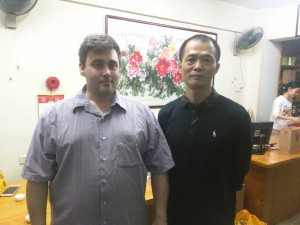
Middle men in the tea industry are a topic that is near to my heart.
To put it simply, tea is a commodity product which has a distribution system that starts with the farmer who grows it and then goes through several other stages before it reaches the customer.
The number of stages that tea has to go through before reaching the end user is variable based on demands of the marketplace and economies of scale.
That is to say, small scale farmers often act as independent vendors with direct clients who travel to their farms and purchase tea for personal use. They often also sell to regional stores and sometimes regional distribution centres.
Medium sized and large farms typically sell only to shops, wholesalers, and factories which distribute the teas to other businesses down a longer distribution chain chain.
The largest farms only sell to private companies who are then able to either distribute their teas to their own stores, or in a large wholesale model.
Operation size and distribution format are essential concerns when considering the overall quality of tea and should not be ignored by shop owners, or serious tea drinkers.
Basically, although small farms do not always make high quality tea products, it is much more common to find good tea from small distributors than large companies. The reasons for this are simple, small farms often use more involved processing practices such as hand making, and more subtly controlled machine production practices. Larger farms often do not have this advantage, since their output is such that there is not enough skilled labour available to undertake the making of the highest quality of tea leaves.
Even in cases such as that of Nepalese Oolong makers, who make much of their tea by hand rolling, the scale of farming required there makes it impossible for artisan tea workers to undertake the work on their own. Artisan tea makers are generally educated in the art of tea making by other artisans and often follow a family line back hundreds of years, keeping in tact parts or the whole of the traditional processing methods of their families.
As a result, artisans make the best tea, but it is also common for their yields to be small and as such, it can be difficult to find artisan made teas outside of the geographical areas in which they are produced.
The next best grade are teas that are made by skilled workers who are overseen by high level artisans. These teas have the touch of a skilled human hand and are also carefully controlled so that they don’t wander from the standard of the farmers who originally designed the production process used on that farm.
A lower grade of tea would be those which are made with larger industrial tea making machines and have less “hand made” involvement. These teas are especially popular for international sale to tea shops and as locally available affordable teas in their countries of origin.
Finally, the lowest grades of tea available are those which are produced by share cropping and standardized into broken, ground and powdered types. These teas can still taste very nice, but they have none of the subtlety of teas which have a direct human control throughout the entire production process. The comparative advantage of such teas is that they can follow a standard which can be reproduced every year, because the standardization process combines tea grades from many different factory farms and sometimes even teas from several different seasons of years of harvest, meaning that standards are kept up by mixing and blending of leaves and as such, the taste of the tea does not change from year to year.
Tea artisans are however restricted to the relative weather conditions of harvest season as well as things such as humidity levels at the time of harvest, and all kinds of different possible conditions during production and storage, so tea artisans are very much bound to accept the prices available to them during seasons in which the highest quality of tea was not produced. Tea artisans also often suffer from the problem of not being able to secure constant wholesaling agreements and have to work very hard to secure customers, meaning that it is often possible for small tea farmers to experience a great deal of economic hardship.
Because of the basic conditions of standardized and unstandardized teas, there is also a proclivity on the part of distributors to prefer to buy from larger tea companies, factories, and share cropping situations, meaning that the supply chain is necessarily made longer through the profiteering activities of an industry which favours quotas over tea quality.
Small wholesalers and store owners who buy farm direct often have better tea and even have competitive pricing for grades of tea which are significantly better than the standard commonly available through larger firms and wholesalers. The issue of course is that small tea companies are also at a disadvantage because of the higher risks involved in personal overhead costs and the difficulties of working within the confines of often confusing and difficult to arrange certifications, shipping arrangements, health standards regulation (for stores which serve tea), and regional taxes, as well as issues of recognition when compared to larger companies, meaning that small tea shop owners have a much harder time getting their teas to market and staying in business.
Long story short, support small tea shops and artisan farmers. They have better tea and work harder to bring you a genuine product with seasonal variation, rather than another imitation industry standard.